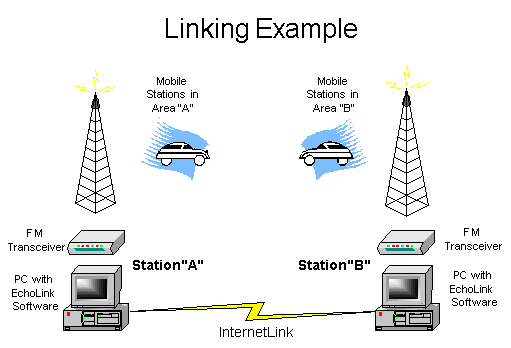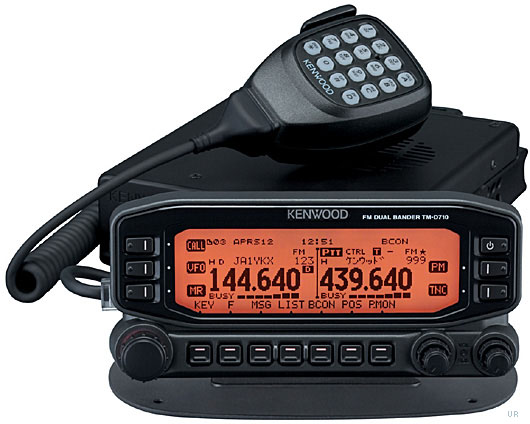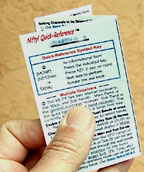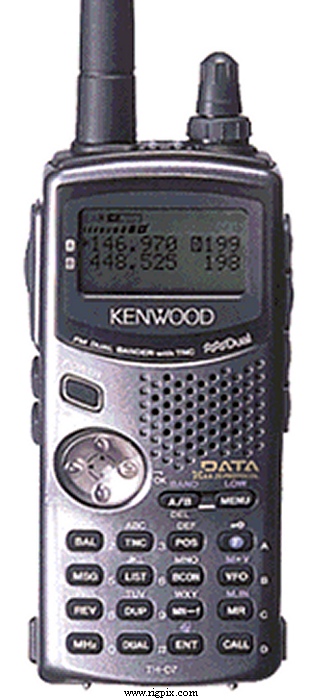Lots of snow here on the eastern edge of Kansas. We got a good dump of slush on Friday but with the temp too high none of it stuck. Then Saturday afternoon the temp dropped below 32d F and decided to stay around 29d F. Saturday night the snow started coming down and has not stopped since.
The snow has been a big hit with Sarah:

My trusty Toyota Tundra (no recalls yet… keeping my fingers crossed) is wearing a nice, thick coat of snowy goodness:

I’ve rekindled my interest in EchoLink and now have a full blown EchoIRLP node (EchoLink Node #496698 and IRLP Node #3370) and am using a TM-D710A to run the node as well as my APRS weather station. What I have been enjoying most so far about IRLP is the ability to tweak and play with the linux software via a (or multiple) terminal session(s). It is helping me improve my linux skills.

Speaking of linux, I have been piecing together my iPORTABLE-mounted station. Each box comfortably fits two components. Box #1 has an IC-7000 and an LDG AT-200pro tuner. Box #2 has a Dell Zino HD and an Alinco DM-330MV power supply. Box #3 will have an embedded EchoIRLP node and a TM-D710A. Box#1 and #2 are already assembled and it makes for a nice, portable working station. Back to linux… it has long been a desire of mine to switch as much of my computing to Ubuntu as possible. Currently the Dell Zino has a dual boot configuration of Vista (which was already installed) and Ubuntu 9.10. I have been trying to put together a nice amateur radio software collection on the Zino and have had mixed results. For rig control, it is hard to beat the Windows program Ham Radio Deluxe. The closest linux version I’ve been able to find is an application called Grig. Not quite what I want to take advantage of all the bells and whistles that the IC-7000 has. I’ve been listening to the excellent podcast Linux in the Ham Shack for recommendations (episode #13 is dedicated to rig control), perusing the January 2010 issue of Linux Journal (the issue is dedicated to Amateur Radio and Linux), and am also looking at shackbox, which is a linux distribution designed with amateur radio in mind. I think I am going to give shackbox a try and see how it goes.
… all of this on a snowy Sunday.
If you get a chance, connect to my EchoIRLP node (EchoLink Node #496698 and IRLP Node #3370) and say hello. You’ll help me procrastinate in finishing my paper on the Army Amateur Radio System.





 I eventually figured out how to set the tone and was on the repeater with the other folks. Then with a bit more thought and troubleshooting, I discovered my feedline connection to the rig had come loose and with that fixed I was back in business. Part of the problem is that I have a relatively new rig in the truck, the Kenwood TM-D710A. It is a very complicated rig and I have only scratched the surface on how to operate it. I was able to interface it with the Garmin Nuvi 350 thanks to a cable from
I eventually figured out how to set the tone and was on the repeater with the other folks. Then with a bit more thought and troubleshooting, I discovered my feedline connection to the rig had come loose and with that fixed I was back in business. Part of the problem is that I have a relatively new rig in the truck, the Kenwood TM-D710A. It is a very complicated rig and I have only scratched the surface on how to operate it. I was able to interface it with the Garmin Nuvi 350 thanks to a cable from 
